Iron Recipes to Support Energy and Vitality
Introduction
Iron is a crucial mineral that plays a central role in transporting oxygen throughout the body. At NutrientShield, we’ve gathered 10 delicious, high-iron recipes to help you combat fatigue and boost your energy levels. These recipes are designed to be both flavorful and nutritious, making it easier to meet your daily iron needs. Disclosure: We may earn a commission from purchases made via affiliate links.
[AdSense 728x90 Placeholder - Replace with your ad unit code]
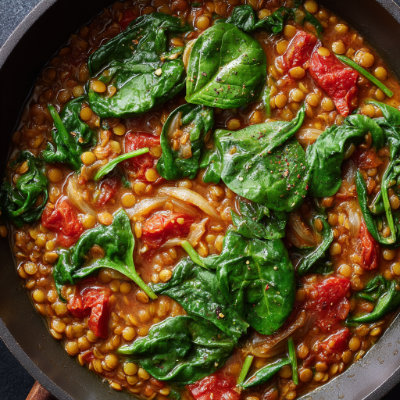
1. Hearty Lentil and Spinach Curry
Why It’s Great
Lentils are an incredible plant-based source of iron, with about 6.6mg per cooked cup. Paired with spinach, which contains non-heme iron, this curry is a powerful tool against iron deficiency. Vitamin C from tomatoes and lemon juice enhances iron absorption.
Ingredients
- 1 tbsp olive oil
- 1 onion, chopped
- 2 cloves garlic, minced
- 1 cup brown lentils, dry
- 4 cups vegetable broth
- 1 can (14.5oz) diced tomatoes
- 2 cups fresh spinach
- 1 tsp curry powder (Buy Curry Powder)
- Salt and pepper to taste
Instructions
In a large pot, sauté onion and garlic until soft. Add lentils, broth, and diced tomatoes. Bring to a boil, then reduce heat and simmer for 25-30 minutes, until lentils are tender. Stir in spinach and curry powder and cook until the spinach wilts. Serves 4.
Nutrient Highlight
Excellent source of non-heme iron (~7.5mg per serving) and fiber.
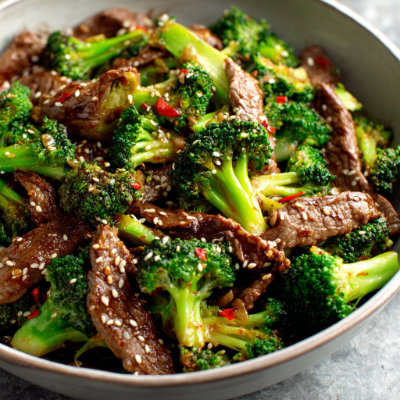
2. Beef and Broccoli Stir-Fry
Why It’s Great
Beef is a top source of heme iron, which is highly bioavailable and easily absorbed by the body. Broccoli provides Vitamin C, which further increases iron absorption, making this a delicious and effective combination.
Ingredients
- 1 lb flank steak, thinly sliced (Buy Steak)
- 3 cups broccoli florets
- 1 tbsp sesame oil
- 1/4 cup soy sauce or tamari
- 1 tbsp honey or brown sugar
- 2 cloves garlic, minced
- 1 tsp grated ginger
Instructions
Marinate beef slices in soy sauce, honey, garlic, and ginger for 15 minutes. Heat sesame oil in a wok or large skillet. Sauté beef until browned, then remove. Add broccoli and stir-fry until tender-crisp. Return beef to the pan and toss to combine. Serves 4.
Nutrient Highlight
Provides a significant amount of heme iron (~3mg per serving) and Vitamin C (~50mg).
[AdSense 728x90 Placeholder - Replace with your ad unit code]
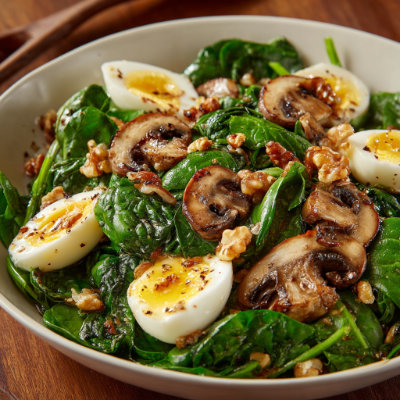
3. Spinach and Mushroom Salad
Why It’s Great
Spinach is rich in non-heme iron. While absorption can be a challenge, pairing it with Vitamin C-rich foods like lemon dressing significantly improves its bioavailability.
Ingredients
- 2 cups fresh spinach (Buy Spinach)
- 1 cup sliced mushrooms
- 1/4 cup chopped walnuts
- 1 hard-boiled egg, sliced
- 2 tbsp lemon juice and olive oil dressing
Instructions
Combine spinach, mushrooms, walnuts, and egg in a bowl. Drizzle with the lemon-olive oil dressing and toss gently to coat. Serves 1.
Nutrient Highlight
Good source of iron (~3.5mg) and plant-based protein (~7g).
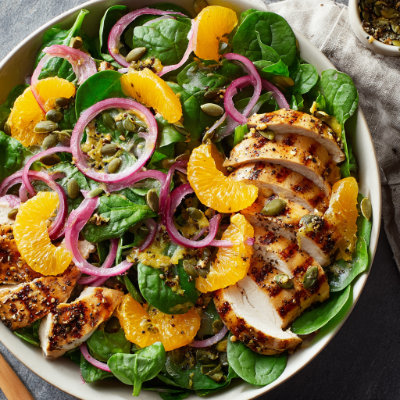
4. Iron-Rich Spinach Salad with Grilled Chicken
Why It’s Great
This salad is a fantastic way to boost your iron intake, primarily from the spinach, which is an excellent source of non-heme iron. Paired with a source of Vitamin C (the orange segments) and the heme iron from the grilled chicken, this meal helps your body absorb the iron more efficiently.
Ingredients
- 3 cups fresh spinach
- 1 grilled chicken breast, sliced (or 1 cup chickpeas for a vegetarian option)
- 1/4 cup pumpkin seeds
- 1/2 cup orange segments
- 1/4 red onion, thinly sliced
- 2 tbsp lemon vinaigrette dressing
Instructions
In a large bowl, combine the spinach, sliced grilled chicken (or chickpeas), pumpkin seeds, and red onion. Add the orange segments. Drizzle with the lemon vinaigrette dressing and toss gently to coat all the ingredients. Serve immediately. Serves 1.
Nutrient Highlight
Spinach is rich in iron (~3mg per cooked ½ cup), while pumpkin seeds add another boost (~4.7mg per ¼ cup). The Vitamin C in the orange helps improve the absorption of the plant-based iron.
[AdSense 728x90 Placeholder - Replace with your ad unit code]
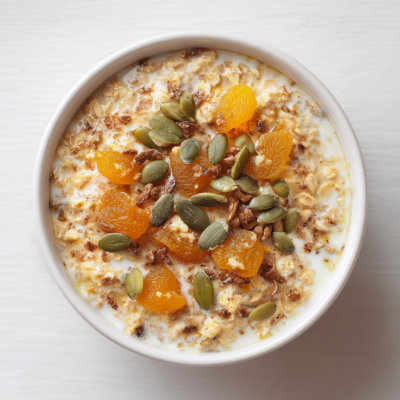
5. Iron-Fortified Oatmeal
Why It’s Great
Many cereals, including oatmeal, are fortified with iron. A single serving can provide a significant portion of your daily recommended intake, making it a simple breakfast choice to support energy levels.
Ingredients
- 1 cup rolled oats (Buy Oats)
- 2 cups water or milk
- 1 tbsp pumpkin seeds
- 1 tbsp sunflower seeds
- 1/4 cup dried apricots, chopped
- Pinch of cinnamon
Instructions
Bring water/milk to a boil. Stir in oats and reduce heat to a simmer. Cook for 5-7 minutes. Top with seeds, apricots, and cinnamon. Serves 1.
Nutrient Highlight
Provides iron (~10mg) and soluble fiber for sustained energy and digestive health.
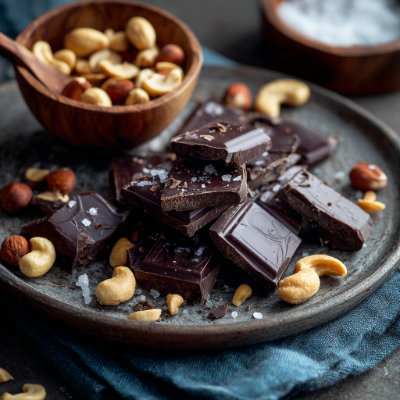
6. Dark Chocolate Delight
Why It’s Great
Dark chocolate with a high cocoa content (70-85%) is a surprising and delicious source of iron, containing around 3.3mg per ounce. This makes for a perfect dessert or snack with an added benefit.
Ingredients
- 1 ounce dark chocolate (70-85% cocoa)
- 1/4 cup mixed nuts (Buy Nuts)
- Pinch of sea salt
Instructions
Break the dark chocolate into small pieces. Serve with a handful of mixed nuts and a sprinkle of sea salt. Serves 1.
Nutrient Highlight
Provides iron (~3.3mg) and antioxidants, supporting both iron levels and overall health.
[AdSense 728x90 Placeholder - Replace with your ad unit code]
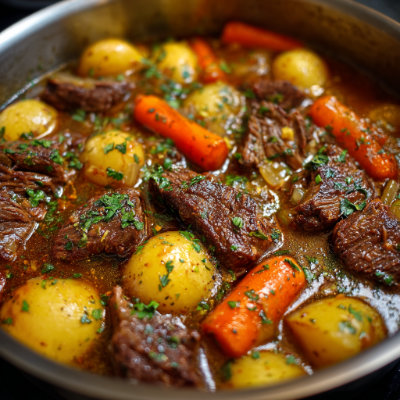
7. Classic Beef Stew
Why It’s Great
Beef stew is an excellent source of heme iron. Cooking the beef slowly in a liquid with vegetables like carrots and potatoes ensures a tender and flavorful dish that's rich in nutrients.
Ingredients
- 1 lb beef stew meat
- 2 carrots, chopped
- 2 potatoes, chopped
- 1 onion, chopped
- 3 cups beef broth
- 1 tbsp olive oil
Instructions
Brown beef in olive oil in a large pot. Add onion and cook until softened. Stir in carrots, potatoes, and broth. Bring to a simmer, then cover and cook on low for 2-3 hours, until the meat is tender. Serves 4.
Nutrient Highlight
High in iron (~4mg per serving) and B vitamins for energy metabolism.
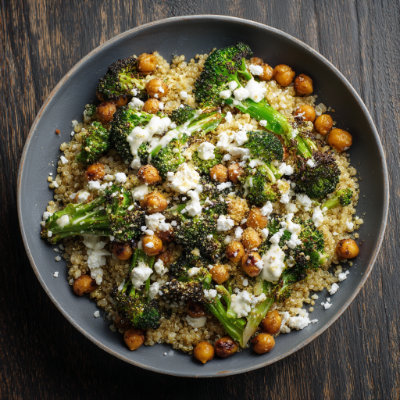
8. Quinoa and Roasted Vegetable Bowl
Why It’s Great
Quinoa is a gluten-free grain that contains a notable amount of iron, with about 2.8mg per cooked cup. Paired with iron-rich roasted vegetables, this bowl is a complete and nutritious meal.
Ingredients
- 1 cup quinoa, uncooked (Buy Quinoa)
- 1 cup roasted broccoli
- 1 cup roasted chickpeas (Buy Chickpeas)
- 1/4 cup crumbled feta or nutritional yeast
- Lemon-tahini dressing
Instructions
Cook quinoa according to package directions. Toss roasted broccoli and chickpeas with the cooked quinoa. Top with feta or nutritional yeast and drizzle with dressing. Serves 2.
Nutrient Highlight
Provides iron (~2.8mg) and complete protein (~8g), making it a well-rounded meal.
[AdSense 728x90 Placeholder - Replace with your ad unit code]
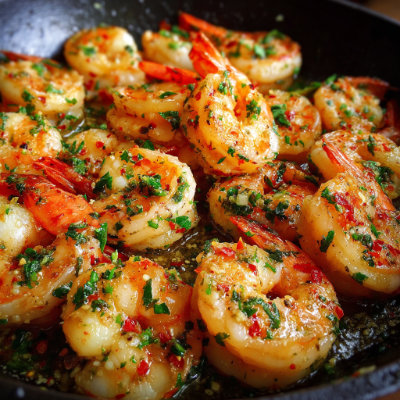
9. Shrimp Scampi
Why It’s Great
Shrimp is a good source of heme iron, providing around 2.6mg per 3-ounce serving. This quick and easy recipe makes for a light dinner with a significant iron boost.
Ingredients
- 1 tbsp olive oil
- 1 lb shrimp, peeled and deveined
- 2 cloves garlic, minced
- 1/2 cup white wine or chicken broth
- 1 tbsp fresh parsley, chopped
- Pinch of red pepper flakes
- Salt and pepper to taste
Instructions
Heat olive oil in a pan. Sauté garlic for 1 minute. Add shrimp and cook until pink and opaque. Add wine or broth and red pepper flakes, simmering for 2 minutes. Stir in parsley and serve. Serves 2.
Nutrient Highlight
Good source of iron (~2.6mg) and high-quality protein (~20g).
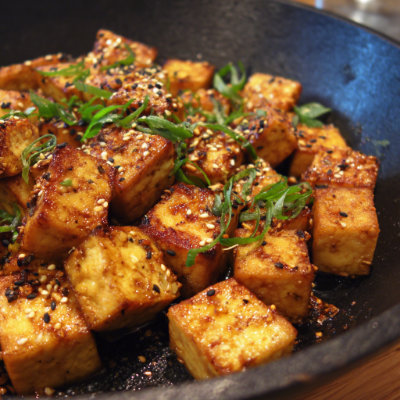
10. Sesame Tofu with Soy Sauce
Why It’s Great
Firm tofu provides a good amount of non-heme iron, approximately 3.3mg per half cup. The soy sauce and sesame seeds add a flavorful twist while boosting the iron content of this simple dish.
Ingredients
- 1 block firm tofu, pressed and cubed
- 1 tbsp sesame oil
- 2 tbsp soy sauce or tamari
- 1 tbsp sesame seeds
Instructions
Toss tofu cubes in sesame oil and soy sauce. Pan-fry until golden brown on all sides. Sprinkle with sesame seeds and serve. Serves 2.
Nutrient Highlight
Provides iron (~3.3mg) and plant-based protein, making it a great vegan option.
[AdSense 728x90 Placeholder - Replace with your ad unit code]
Shop Iron & Nutrient Products (Affiliate Links)
Tips for Success
- Pair non-heme iron foods (plant-based) with Vitamin C to enhance absorption.
- Consult a dietitian before major dietary changes.
- Share your recipes in our Users-Blogs community!
Disclaimer
This content is for educational purposes. Consult a healthcare professional before making dietary changes.
References
- [1] Iron in Lentils. USDA FoodData Central. https://fdc.nal.usda.gov/
- [2] Iron in Beef. USDA FoodData Central. https://fdc.nal.usda.gov/
- [3] Vitamin C and Iron Absorption. The American Journal of Clinical Nutrition. https://academic.oup.com/ajcn/article/91/5/1461S/4597555
- [4] Iron in Spinach. USDA FoodData Central. https://fdc.nal.usda.gov/
- [5] Iron in Black Beans. USDA FoodData Central. https://fdc.nal.usda.gov/
- [6] Iron in Fortified Cereals. NIH, Office of Dietary Supplements. https://ods.od.nih.gov/factsheets/Iron-HealthProfessional/
- [7] Iron in Dark Chocolate. USDA FoodData Central. https://fdc.nal.usda.gov/
- [8] Iron in Quinoa. USDA FoodData Central. https://fdc.nal.usda.gov/
- [9] Iron in Shrimp. USDA FoodData Central. https://fdc.nal.usda.gov/
- [10] Iron in Tofu. USDA FoodData Central. https://fdc.nal.usda.gov/
